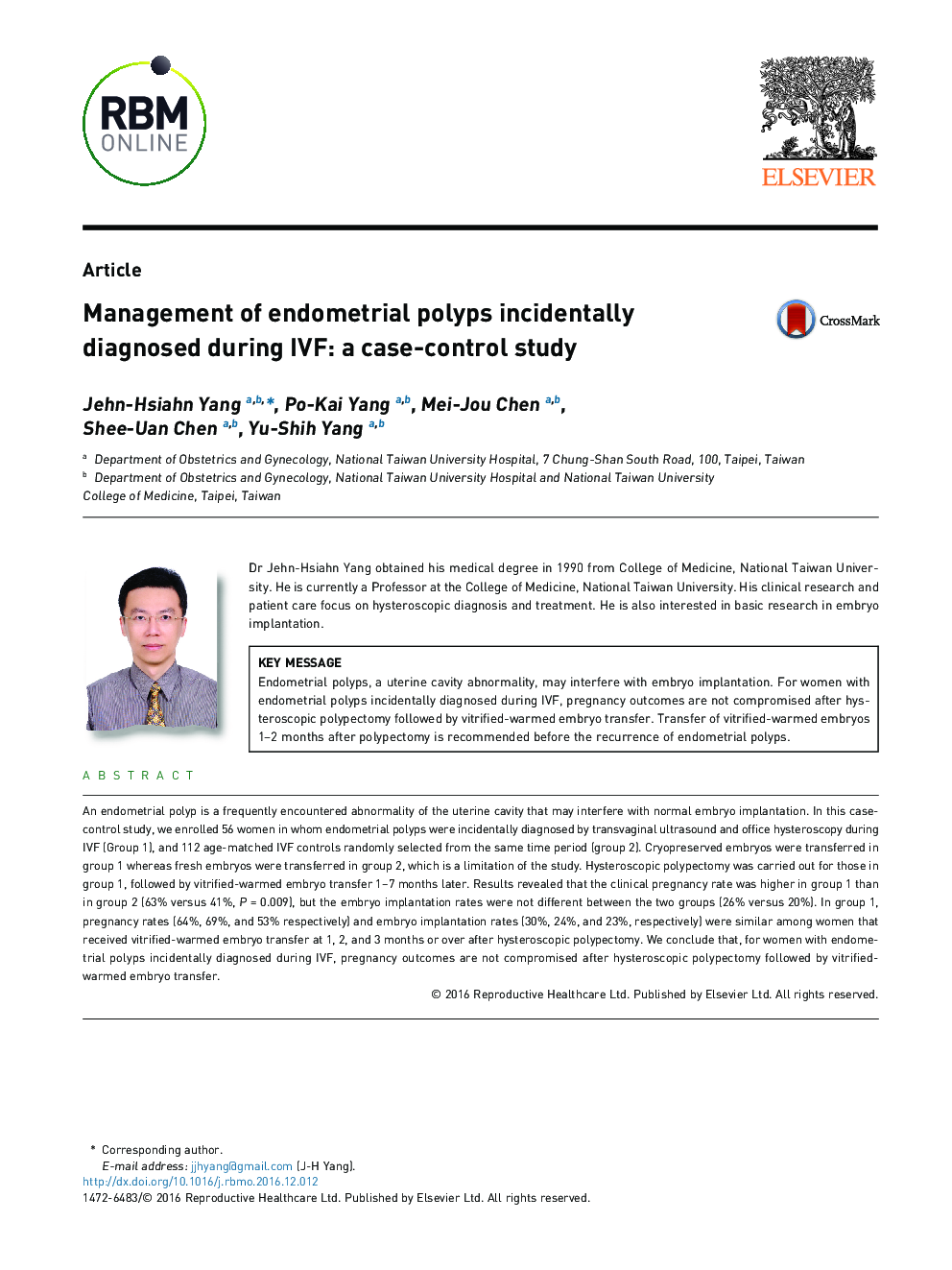| Article ID | Journal | Published Year | Pages | File Type |
|---|---|---|---|---|
| 5696713 | Reproductive BioMedicine Online | 2017 | 6 Pages |
An endometrial polyp is a frequently encountered abnormality of the uterine cavity that may interfere with normal embryo implantation. In this case-control study, we enrolled 56 women in whom endometrial polyps were incidentally diagnosed by transvaginal ultrasound and office hysteroscopy during IVF (Group 1), and 112 age-matched IVF controls randomly selected from the same time period (group 2). Cryopreserved embryos were transferred in group 1 whereas fresh embryos were transferred in group 2, which is a limitation of the study. Hysteroscopic polypectomy was carried out for those in group 1, followed by vitrified-warmed embryo transfer 1-7 months later. Results revealed that the clinical pregnancy rate was higher in group 1 than in group 2 (63% versus 41%, P = 0.009), but the embryo implantation rates were not different between the two groups (26% versus 20%). In group 1, pregnancy rates (64%, 69%, and 53% respectively) and embryo implantation rates (30%, 24%, and 23%, respectively) were similar among women that received vitrified-warmed embryo transfer at 1, 2, and 3 months or over after hysteroscopic polypectomy. We conclude that, for women with endometrial polyps incidentally diagnosed during IVF, pregnancy outcomes are not compromised after hysteroscopic polypectomy followed by vitrified-warmed embryo transfer.
